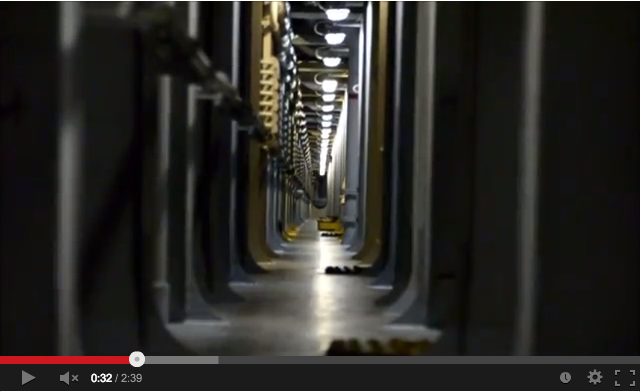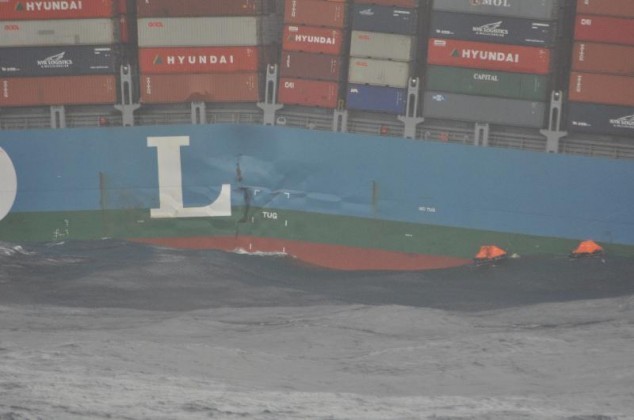UK Strikes at Heart of Russia’s Arctic Energy Empire
New maritime services ban threatens to sever lifeline for Yamal LNG exports By Paul Morgan (gCaptain) – In the frozen waters above the Arctic Circle, a fleet of specialised ships...

As the MOL Comfort disaster clearly showed, there is a point at which the load on a ship’s structure exceeds the breaking strength.
One might say the vessel was brought “beyond the environment” or perhaps “outside the environment”… but those would be an incorrect assessments.
The steel structure of a vessel is made up of a complex arrangement of transverse (sideways) and longitudinal (lengthwise) plates and beams with precisely measured cross sections that contribute to the overall “section modulus” of the vessel, a measure of the overall bending strength of a given structure. In the case of the MOL Comfort, the vessel fractured in a transverse fashion because the stress on the structure of the vessel eventually exceeded the fracture point of the sum of the individual steel components.
SEE ALSO: MOL Comfort Incident in Photos
The steel doesn’t simply snap in pieces like a glass might if you dropped it on a concrete floor. Because the steel itself has elastic properties, the ship itself is elastic. When put under load, the steel flexes and moves elastically, returning to its original shape every time.
The above video shows the elastic flexing of the containership MOL Excellence underway.
In the case of the MOL Comfort, the load put on the steel components exceeded the elastic range of the steel. That is, The stress put on the steel caused it to flex (strain) so much that it did not return to its original shape after the load was removed. At that point, the steel exceeded its yield point.
Plastic deformation was noted by ClassNK when they conducted their evaluations of the sister vessels of the MOL Comfort. They note that “buckling type deformations measuring approximately 20mm in height were observed on the bottom shell plates in the vicinity of center line of midship area.”
Just because the steel exceeded the yield point, does not mean however that the steel began to break. Steel, like many other materials actually becomes stronger as it goes through “plastic deformation.” This is called strain hardening, a process used by metalworkers to make things like sword blades or steel tools harder.
As the stress on the vessel continued to grow, the steel could not deform any further and it fractured.


Sign up for gCaptain’s newsletter and never miss an update

Subscribe to gCaptain Daily and stay informed with the latest global maritime and offshore news
Essential news coupled with the finest maritime content sourced from across the globe.
Sign Up